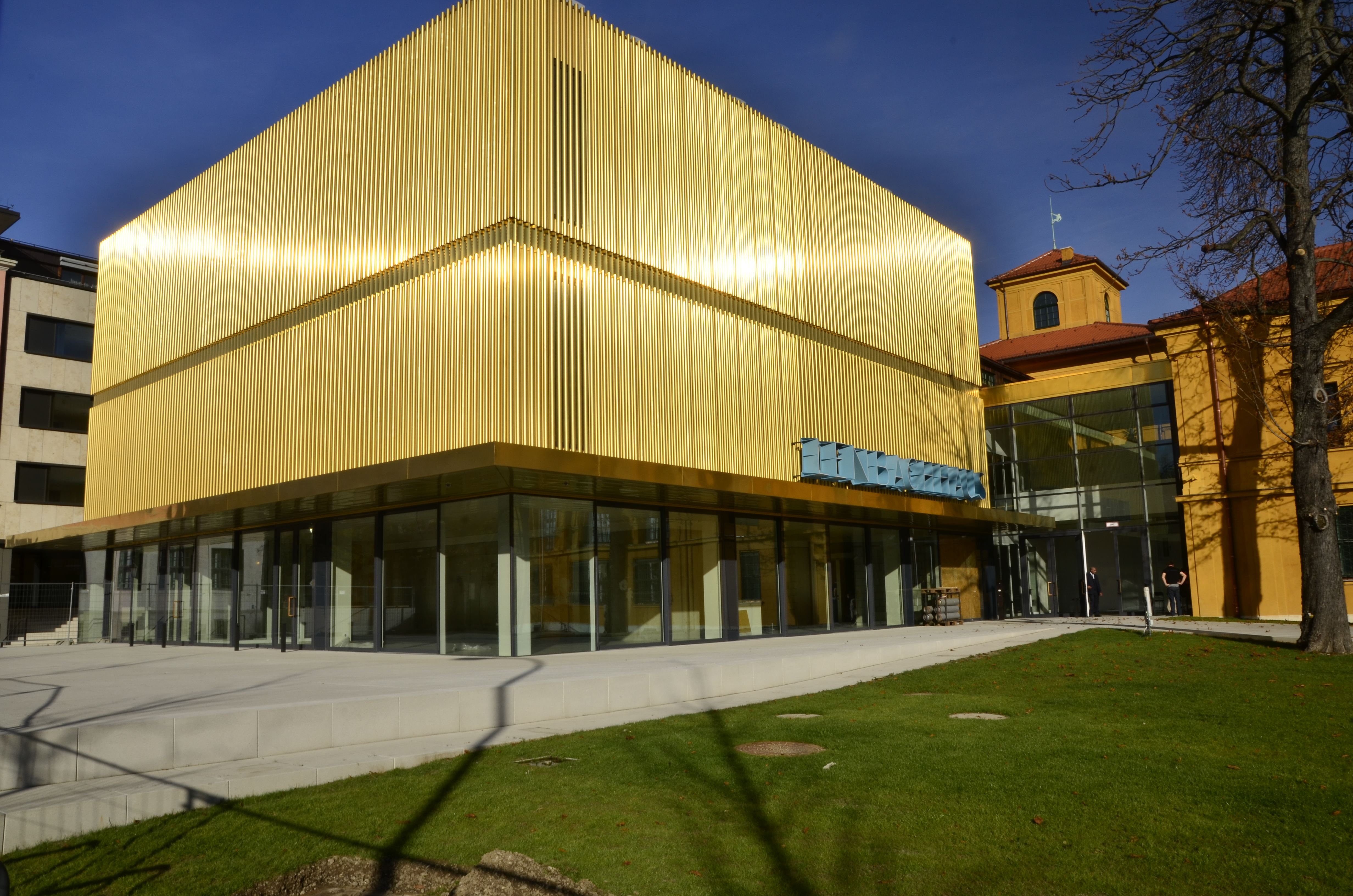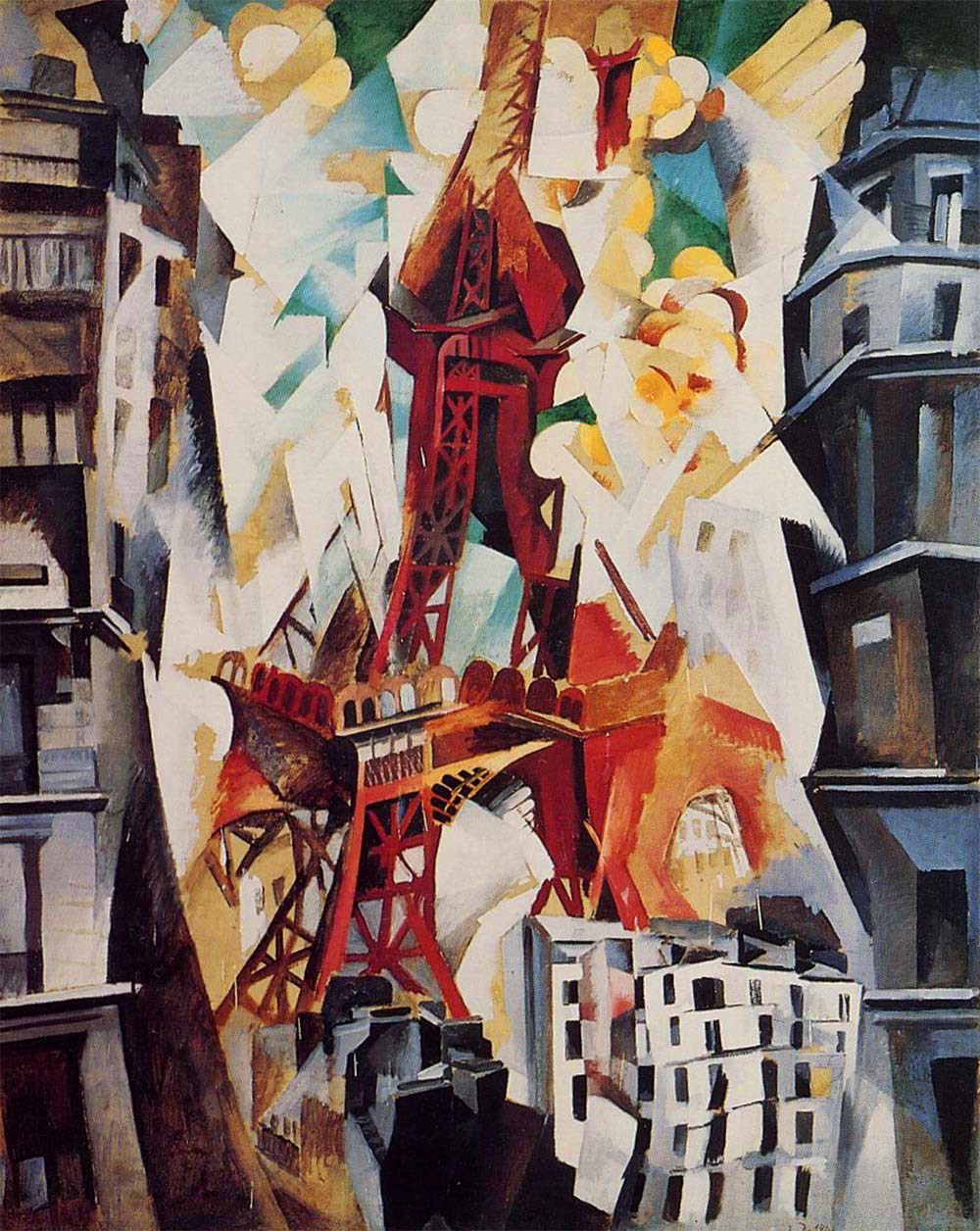|
Promenade (Macke)
''Promenade'' is an oil-on-cardboard painting by the German artist August Macke, executed in 1913. It is held at the Städtische Galerie im Lenbachhaus in Munich. Chronologically, it is the first of the paintings that he created after moving to Hilterfingen in Switzerland. History In the Autumn of 1913, Macke, together with his wife and son, moved to Switzerland, settling in Hilterfingen, on Lake Thun, where he would spend eight months, from September 1913 to May 1914, working intensively. The ''Promenade'' painting is the first created during this period, and the first where Macke used the motif of a walk in a park near a bridge and water. Decisive for Macke was the influence of the contemporary French painting, above all the work of Robert Delaunay Robert Delaunay (12 April 1885 – 25 October 1941) was a French artist who, with his wife Sonia Delaunay and others, co-founded the Orphism art movement, noted for its use of strong colours and geometric shapes. His later works ... [...More Info...] [...Related Items...] OR: [Wikipedia] [Google] [Baidu] |
Oil Painting
Oil painting is the process of painting with pigments with a medium of drying oil as the binder. It has been the most common technique for artistic painting on wood panel or canvas for several centuries, spreading from Europe to the rest of the world. The advantages of oil for painting images include "greater flexibility, richer and denser colour, the use of layers, and a wider range from light to dark". But the process is slower, especially when one layer of paint needs to be allowed to dry before another is applied. The oldest known oil paintings were created by Buddhist artists in Afghanistan and date back to the 7th century AD. The technique of binding pigments in oil was later brought to Europe in the 15th century, about 900 years later. The adoption of oil paint by Europeans began with Early Netherlandish painting in Northern Europe, and by the height of the Renaissance, oil painting techniques had almost completely replaced the use of tempera paints in the majority ... [...More Info...] [...Related Items...] OR: [Wikipedia] [Google] [Baidu] |
August Macke
August Robert Ludwig Macke (3 January 1887 – 26 September 1914) was a German Expressionist painter. He was one of the leading members of the German Expressionist group Der Blaue Reiter (The Blue Rider). He lived during a particularly active time for German art: he saw the development of the main German Expressionist movements as well as the arrival of the successive avant-garde movements which were forming in the rest of Europe. As an artist of his time, Macke knew how to integrate into his painting the elements of the avant-garde which most interested him. Like his friend Franz Marc and Otto Soltau, he was one of the young German artists who died in the First World War. Early life August Robert Ludwig Macke was born in Germany on 3 January 1887, in Meschede, Westphalia. He was the only son of August Friedrich Hermann Macke (1845–1904), a building contractor and amateur artist, and his wife, Maria Florentine, née Adolph, (1848–1922), who came from a farming famil ... [...More Info...] [...Related Items...] OR: [Wikipedia] [Google] [Baidu] |
Städtische Galerie Im Lenbachhaus
The Lenbachhaus () is a building housing an art museum in Munich's '' Kunstareal''. The building The Lenbachhaus was built as a Florentine-style villa for the painter Franz von Lenbach between 1887 and 1891 by Gabriel von Seidl and was expanded 1927–1929 by Hans Grässel and again 1969–1972 by Heinrich Volbehr and Rudolf Thönnessen. Some of the rooms have kept their original design. The city of Munich acquired the building in 1924 and opened a museum there in 1929. The latest wing was closed to the public in 2009 to allow the expansion and restoration of the Lenbachhaus by Norman Foster; the 1972 extension was demolished to make way for the new building. The museum reopened in May 2013. The architect placed the new main entrance on Museumsplatz in front of the Propylaea. The new facade, clad in metal tubes made of an alloy of copper and aluminum, will weather with time. The gallery The gallery contains a variety of works by Munich painters and contemporary artists, ... [...More Info...] [...Related Items...] OR: [Wikipedia] [Google] [Baidu] |
Munich
Munich ( ; german: München ; bar, Minga ) is the capital and most populous city of the German state of Bavaria. With a population of 1,558,395 inhabitants as of 31 July 2020, it is the third-largest city in Germany, after Berlin and Hamburg, and thus the largest which does not constitute its own state, as well as the 11th-largest city in the European Union. The city's metropolitan region is home to 6 million people. Straddling the banks of the River Isar (a tributary of the Danube) north of the Bavarian Alps, Munich is the seat of the Bavarian administrative region of Upper Bavaria, while being the most densely populated municipality in Germany (4,500 people per km2). Munich is the second-largest city in the Bavarian dialect area, after the Austrian capital of Vienna. The city was first mentioned in 1158. Catholic Munich strongly resisted the Reformation and was a political point of divergence during the resulting Thirty Years' War, but remained physically unt ... [...More Info...] [...Related Items...] OR: [Wikipedia] [Google] [Baidu] |
Hilterfingen
Hilterfingen is a municipality in the administrative district of Thun in the canton of Bern in Switzerland. History Hilterfingen is first mentioned in 1175 as ''Hiltolfingen''. The oldest trace of a settlement in the area are some early-Bronze Age graves near Hünegg and Aebnit. The area was inhabited during the Early Middle Ages as evidenced by 6th and 7th century graves at Eichbühl and Hünegg. By the Middle Ages it was owned by the Freiherr von Oberhofen, who donated the village to the college of canons at Amsoldingen. Over the following centuries, the college gradually became impoverished and in 1484 the Pope approved the dissolution of the college and its incorporation into the newly created college of canons of St. Vincent's cathedral in Bern. Four years later, in 1488, Hilterfingen was officially incorporated into the Bernese Thun District. It joined the Oberhofen bailiwick in 1652. Following the 1798 French invasion, Hilterfingen became part of the Helv ... [...More Info...] [...Related Items...] OR: [Wikipedia] [Google] [Baidu] |
Switzerland
). Swiss law does not designate a ''capital'' as such, but the federal parliament and government are installed in Bern, while other federal institutions, such as the federal courts, are in other cities (Bellinzona, Lausanne, Luzern, Neuchâtel, St. Gallen a.o.). , coordinates = , largest_city = Zürich , official_languages = , englishmotto = "One for all, all for one" , religion_year = 2020 , religion_ref = , religion = , demonym = , german: Schweizer/Schweizerin, french: Suisse/Suissesse, it, svizzero/svizzera or , rm, Svizzer/Svizra , government_type = Federal assembly-independent directorial republic with elements of a direct democracy , leader_title1 = Federal Council , leader_name1 = , leader_title2 = , leader_name2 = Walter Thurnherr , legislature = Federal Assembly , upper_house = Council of ... [...More Info...] [...Related Items...] OR: [Wikipedia] [Google] [Baidu] |
Lake Thun
Lake Thun (german: Thunersee) is an Alpine lake in the Bernese Oberland in Switzerland named after the city of Thun, on its northern shore. At in surface area, it is the largest Swiss lake entirely within a single canton. The lake was created after the last glacial period. After the 10th century, it split from Lake Brienz, before which the two lakes were combined, as ''Wendelsee'' ("Lake Wendel"). The culminating point of the lake's drainage basin is the Finsteraarhorn at above sea level. Lake Thun's approximate catchment area frequently causes local flooding after heavy rainfalls. This occurs because the river Aare (german: Aare), which drains Lake Thun, has only limited capacity to handle the excess runoff. The lake is fed by water from Lake Brienz to the southeast, which is higher than Lake Thun, and various streams in the Oberland, including the Kander. In 1835, passenger steamships began operating regularly on the lake. Ten passenger ships, operated by the local rai ... [...More Info...] [...Related Items...] OR: [Wikipedia] [Google] [Baidu] |
Robert Delaunay
Robert Delaunay (12 April 1885 – 25 October 1941) was a French artist who, with his wife Sonia Delaunay and others, co-founded the Orphism art movement, noted for its use of strong colours and geometric shapes. His later works were more abstract. His key influence related to bold use of colour and a clear love of experimentation with both depth and tone. Overview Delaunay is most closely identified with Orphism. From 1912 to 1914, he painted nonfigurative paintings based on the optical characteristics of brilliant colors that were so dynamic they would function as the form. His theories are mostly concerned with color and light and influenced many, including Stanton Macdonald-Wright, Morgan Russell, Patrick Henry Bruce, Der Blaue Reiter, August Macke, Franz Marc, Paul Klee, and Lyonel Feininger. Art Critic Guillaume Apollinaire was strongly influenced by Delaunay's theories of color and often quoted from them to explain Orphism, which he had named. Delaunay's fixations ... [...More Info...] [...Related Items...] OR: [Wikipedia] [Google] [Baidu] |
Elisabeth Erdmann-Macke
Elisabeth Erdmann-Macke (née Gerhardt; 11 May 1888 – 17 March 1978) was a German writer who focused on memoirs of her time as the wife of the expressionist painter August Macke, who had portrayed her more than 200 times. He died in World War I. Later, she lived in Berlin with her second husband, Lothar Erdmann, who died in a concentration camp during World War II. She saved Macke's paintings and copies of his letters by moving them from her house in Berlin before it was bombed in 1943. Life Born in Bonn, Elisabeth Gerhardt, called Lisbeth, was the daughter of a family of merchants. Her father, Carl Gerhardt, owned a factory for pharmaceutical appliances. Her mother came from Erfurt. Her uncle was German industrialist and art collector Bernhard Koehler. Elisabeth met August Macke in 1903, when he was 16. They kept their relationship secret, but he often visited her parents' house under the pretence of painting her brother. When her father was seriously ill in 1905, she was sen ... [...More Info...] [...Related Items...] OR: [Wikipedia] [Google] [Baidu] |




